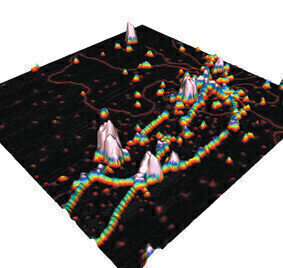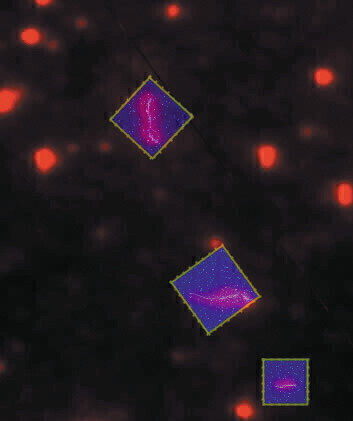Microscopy & Microtechniques
DirectOverlay Display and Analysis Software
Aug 03 2011
JPK Instruments provides a unique software package to make the display of light microscopy images together with atomic force microscopyimages a seamless exercise. This package is called DirectOverlay™.
Atomic force microscopy (AFM) is a powerful tool to investigate a huge variety of different samples with nanometre scale resolution under physiological conditions. As well as providing topographic measurements, information about interaction forces and mechanical properties like adhesion and elasticity can also be obtained.
Perfect integration of AFM with an optical setup can increase the range of applications and opens up many possibilities for correlating structural information with optical information such as functionalised labelling of certain components.
To achieve the perfect combination of optics and AFM at the molecular scale, distortions must be prevented. This will result in two images, such as optical and AFM images, that do not perfectly overlay. Reasons for distortions include aberrations arising from the lenses and mirrors of the optics system. This nonlinear stretching, rotating and offsetting of optical images are present in nearly all types of optical setups.
To generate a seamless overlay of both techniques, JPK developed a cutting-edge calibration method, called DirectOverlay, which uses the accuracy of the AFM closed-loop scanning system to enable a true display of absolute angles and length coordinates.
The calibration procedure is done automatically and uses the known positions and offsets of the cantilever to calibrate the optical image into the AFM coordinates. To generate a perfect match of the optical and AFM image, 25 or more points are used in the calibration algorithm. At each point, an optical image is acquired and the position of the cantilever tip is automatically detected in each optical image without needing input on cantilever angle, shape or magnification.
The algorithm then performs a nonlinear conversion and, as a result, the optical image is corrected for any lens imperfections and converted into the linearized AFM length coordinates. This provides a perfect integration of optical and AFM data with sub-diffraction limit precision.
Finally, the calibrated optical image is transferred into the JPK SPM software, so that AFM scan regions can be selected within the optical image. Direct ‘in optical image’ selection of AFM measurements (imaging, mapping and force spectroscopy) leads to more efficient experiments and reduces dramatically overview image scanning in AFM.
Digital Edition
International Labmate Buyers' Guide 2024/25
June 2024
Buyers' Guide featuring: Product Listings & Manufacturers Directory Chromatography Articles - Enhancing HPLC Field Service with fast-response, non-invasive flowmeters - Digital transformatio...
View all digital editions
Events
Jul 03 2024 Gandhinagar, India
Jul 07 2024 Dublin, Ireland
Jul 20 2024 Denver, CO, USA
Jul 21 2024 Cape Town, South Africa
Jul 28 2024 San Diego, CA USA



















